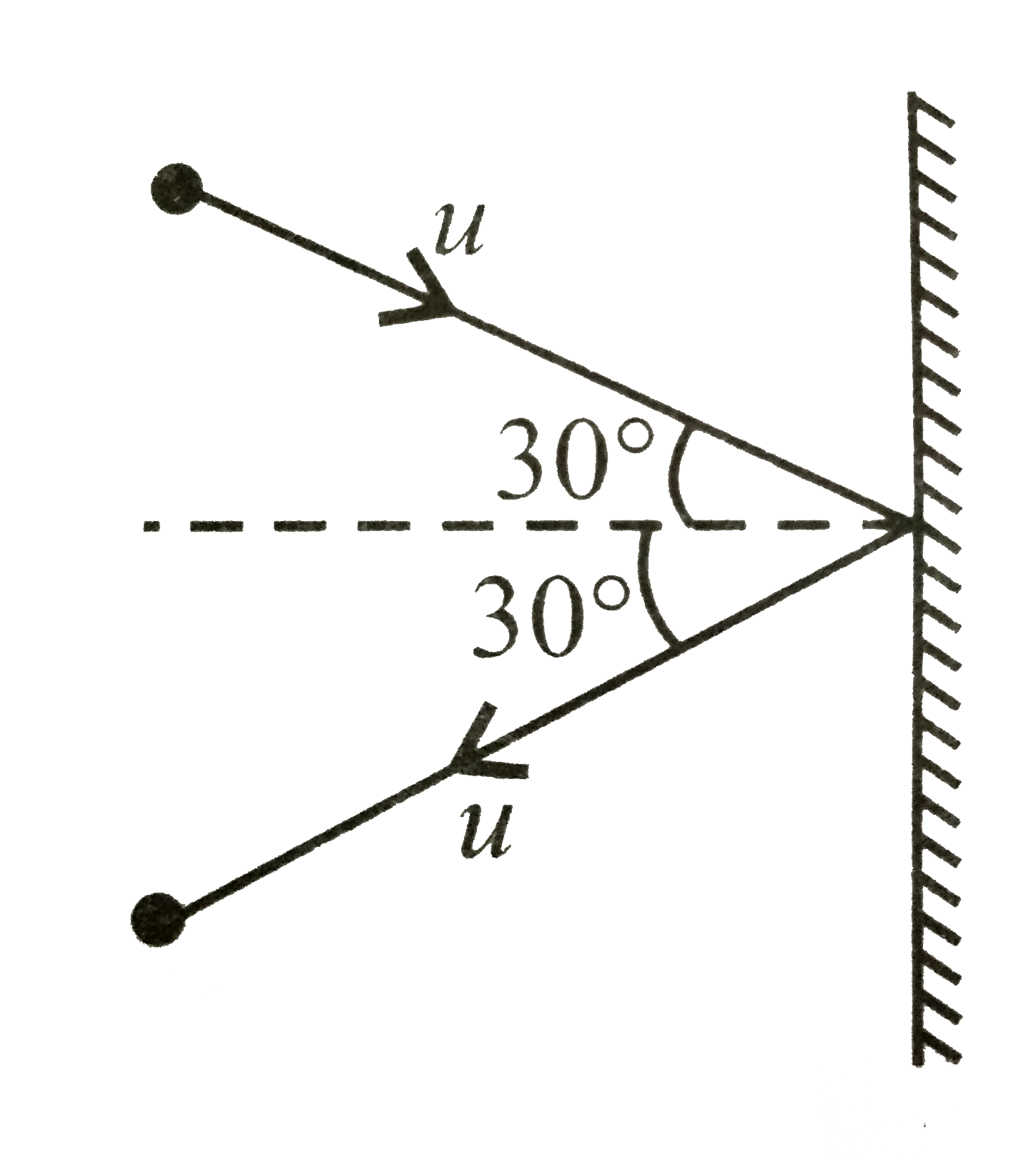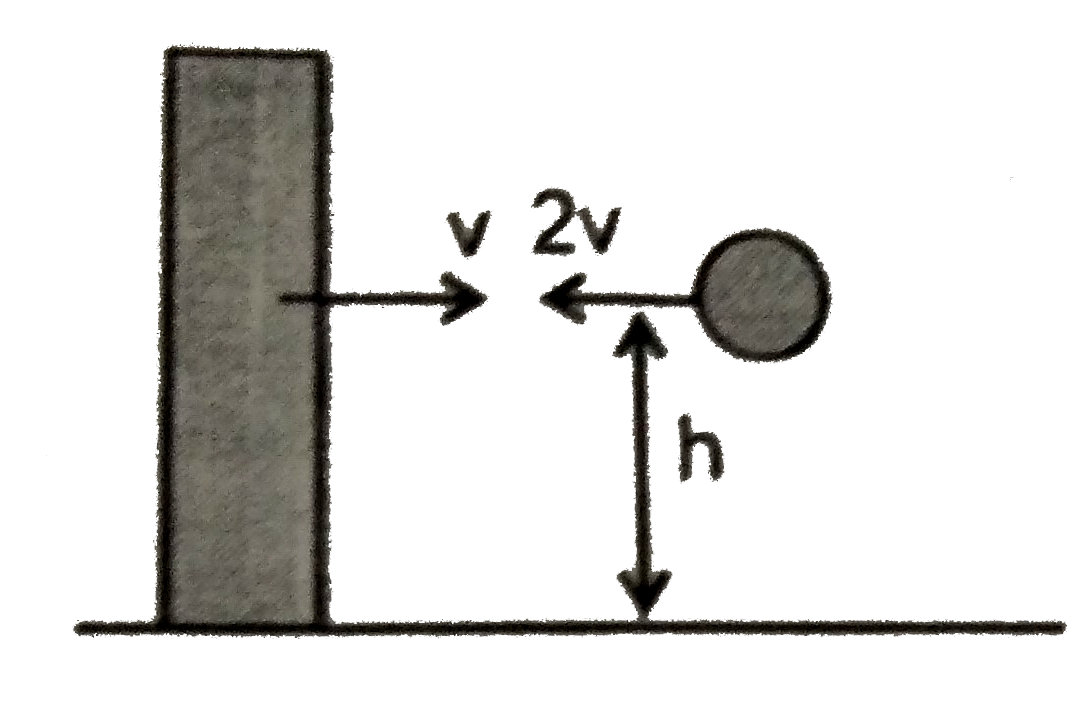Assertion: When a ball collised elastically with a floor, it rebounds with the same velocity as with it strikes.
Reason: Momentum of earth + ball system remains constant.
If both assertion and Reason are true and the Reason is the correct explanation of the assertion.
If both assertion and Reason are true but the reason is not the correct explanation of the assertion
If assertion is true but reason is false
If both assertion and reason are false.
The correct Answer is:B
To solve the question, we need to analyze both the assertion and the reason provided.
1. Understanding the Assertion:
- The assertion states that when a ball collides elastically with the floor, it rebounds with the same velocity as it strikes.
- In an elastic collision, both momentum and kinetic energy are conserved. Therefore, if a ball strikes the floor with a certain velocity (let's say v), it will rebound with the same velocity v if we assume no energy is lost to other forms (like heat or sound).
2. Understanding the Reason:
- The reason states that the momentum of the earth + ball system remains constant.
- In any collision, the total momentum of the system (in this case, the earth and the ball) is conserved. However, the earth is so massive compared to the ball that its velocity change is negligible. Thus, for practical purposes, we can say that the ball's momentum change is significant while the earth's change is not.
3. Analyzing the Relationship:
- The assertion is true because in a perfectly elastic collision, the ball does rebound with the same velocity it had before the collision.
- The reason is also true because the momentum of the earth + ball system does remain constant during the collision.
4. Determining the Connection:
- While both statements are true, the reason does not provide a correct explanation for the assertion. The assertion specifically refers to the behavior of the ball in an elastic collision, while the reason discusses the conservation of momentum in a broader context that includes the earth.
5. Conclusion:
- Since both the assertion and reason are true but the reason does not correctly explain the assertion, the correct answer is that both are true, but the reason is not the correct explanation for the assertion.
Final Answer:
Both assertion and reason are true, but the reason is not the correct explanation of the assertion.
- The assertion states that when a ball collides elastically with the floor, it rebounds with the same velocity as it strikes.
- In an elastic collision, both momentum and kinetic energy are conserved. Therefore, if a ball strikes the floor with a certain velocity (let's say v), it will rebound with the same velocity v if we assume no energy is lost to other forms (like heat or sound).
- The reason states that the momentum of the earth + ball system remains constant.
- In any collision, the total momentum of the system (in this case, the earth and the ball) is conserved. However, the earth is so massive compared to the ball that its velocity change is negligible. Thus, for practical purposes, we can say that the ball's momentum change is significant while the earth's change is not.
- The assertion is true because in a perfectly elastic collision, the ball does rebound with the same velocity it had before the collision.
- The reason is also true because the momentum of the earth + ball system does remain constant during the collision.
- While both statements are true, the reason does not provide a correct explanation for the assertion. The assertion specifically refers to the behavior of the ball in an elastic collision, while the reason discusses the conservation of momentum in a broader context that includes the earth.
- Since both the assertion and reason are true but the reason does not correctly explain the assertion, the correct answer is that both are true, but the reason is not the correct explanation for the assertion.
Both assertion and reason are true, but the reason is not the correct explanation of the assertion.
Similar Questions
Knowledge Check
A ball his the floor and rebounds after inelastic collision. In this case
AThe momentum of the ball just after the collision is the same as that just before the collision.Bthe mechanical energy of the ball remains the same in the collisionCthe total momentum of the ball and the earth is conservedDthe total energy of the ball and earth is conservedA ball of mass m strikes a rigid walJ with speed u and rebounds with the same speed. The impulse imparted to the ball by the wall is
A2muBmuCzeroD−2muA ball of mass m strikes a rigid walJ with speed u and rebounds with the same speed. The impulse imparted to the ball by the wall is
 Amu sin30∘tB2mu sin30∘tCmu cos30∘tD2mu cos30∘t
Amu sin30∘tB2mu sin30∘tCmu cos30∘tD2mu cos30∘t
A ball weighing 10g hits a hard surface vertically with a speed of 5m/s and rebounds with the same speed The ball remains in contact with the surface speed The ball remains in contact with the surface for 0.01s The average force exerted by the surface on the ball is .
View SolutionA ball of mass m is dropped onto a floor from a certain height. The collision is perfectly elastic and the ball rebounds to the same height and again falls. Find the average force exerted by the ball on the floor during a long time interval.
View SolutionA ball collides elastically with a massive wall moving towards it with a velocity of v as shown. The collision occurs at a height of h above ground level and the velocity of the ball just before collision is 2v in horizontal direction. The distance between the foot of the wall and the point on the ground where the ball lands, at the instant the ball lands, will be :

View SolutionA ball of mass 600 gm strikes a wall with a velocity of 5ms−1 at an angle 30∘ with the wall and rebounds with the same speed at the same angle with the wall. The change in momentum of the ball is, (in kg ms−1)
View SolutionA ball after falling a distance of 5 meter rest hits elastically the floor of a lift and rebounds. At the time of impact the lift was moving up with a velocity of 1m/sec. The velocity with which the ball rebounds just after impact is : (g=10m/sec2)
View Solution
